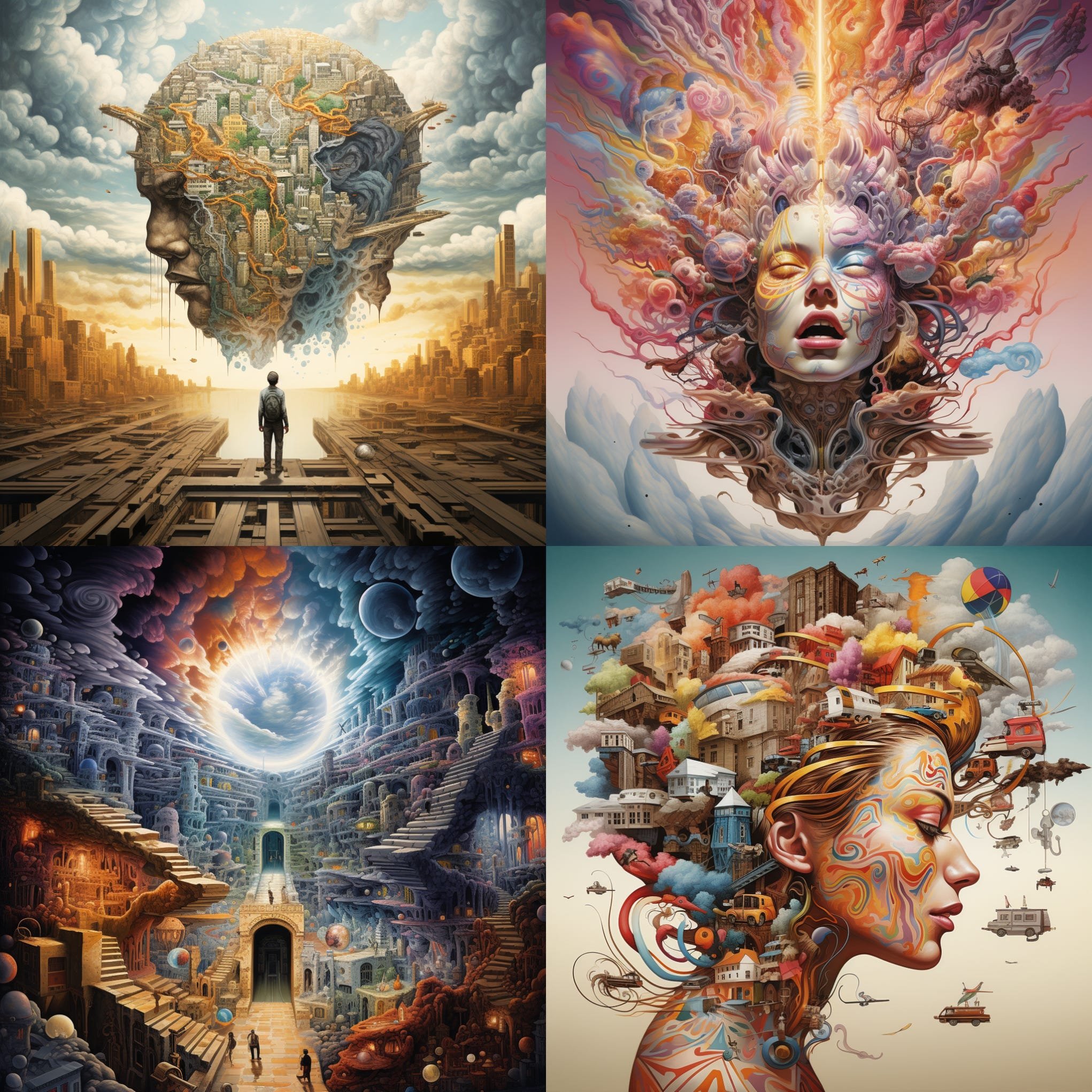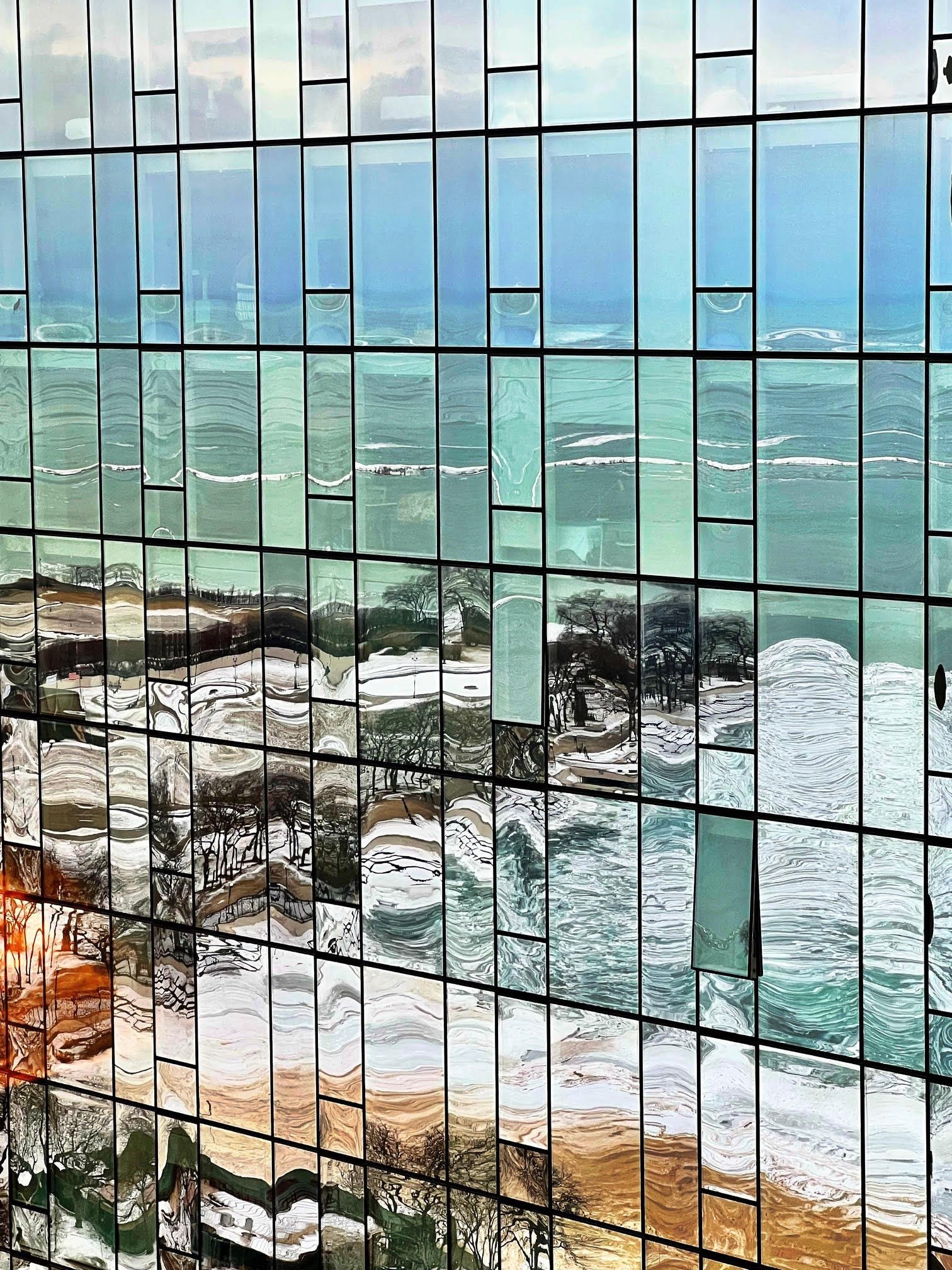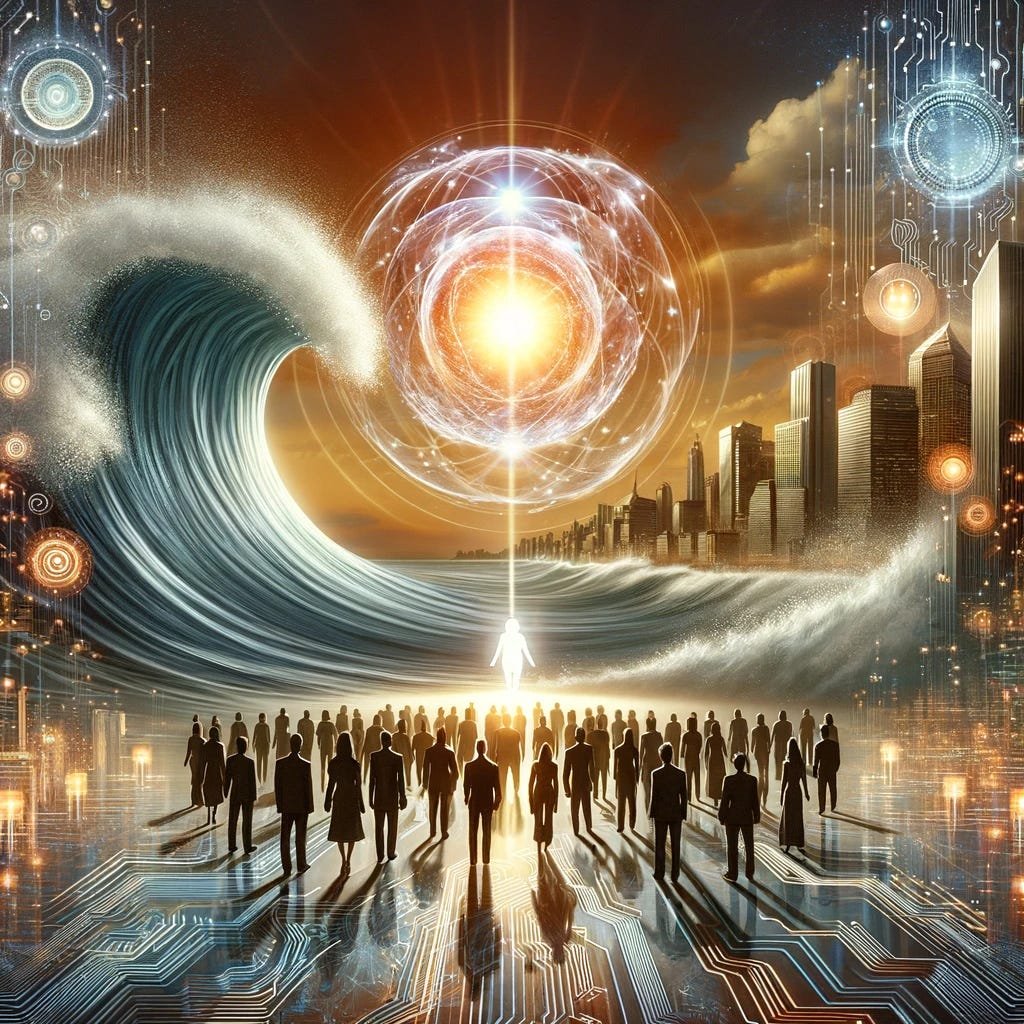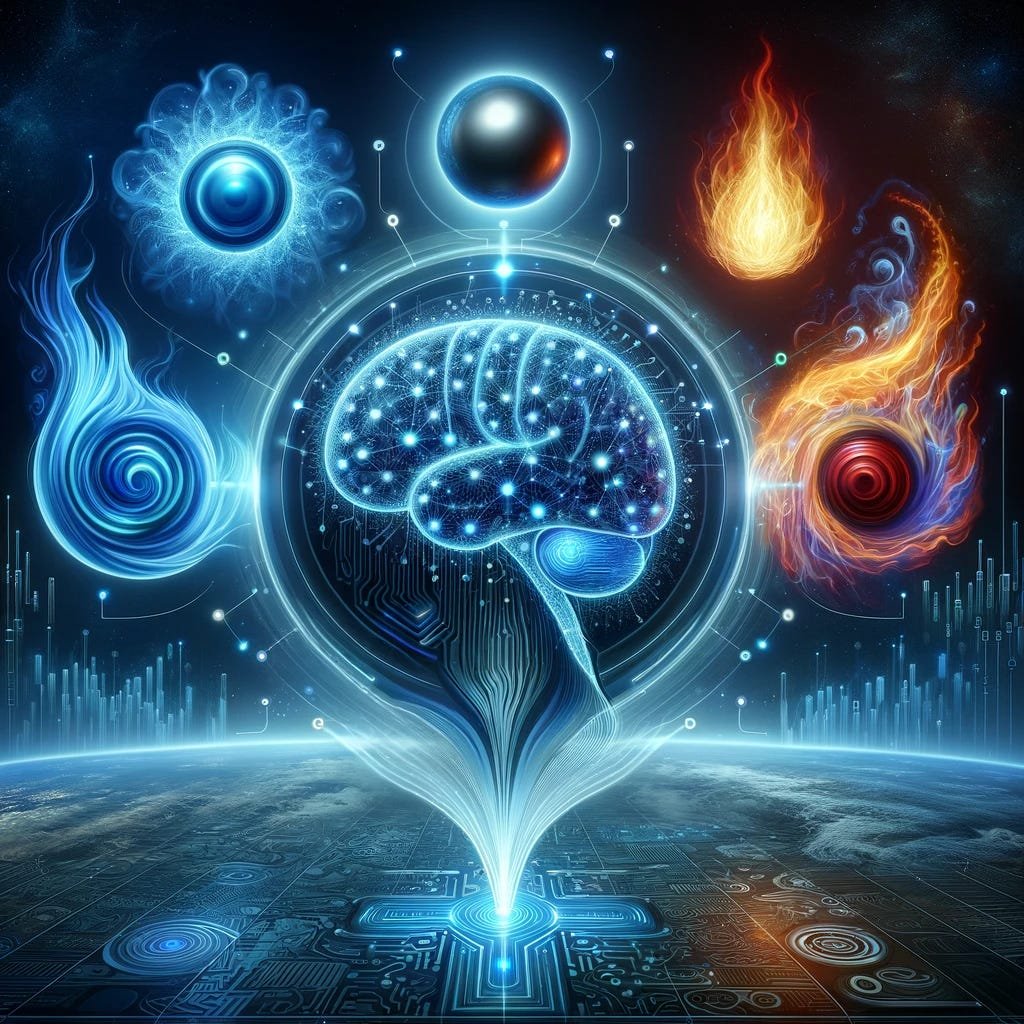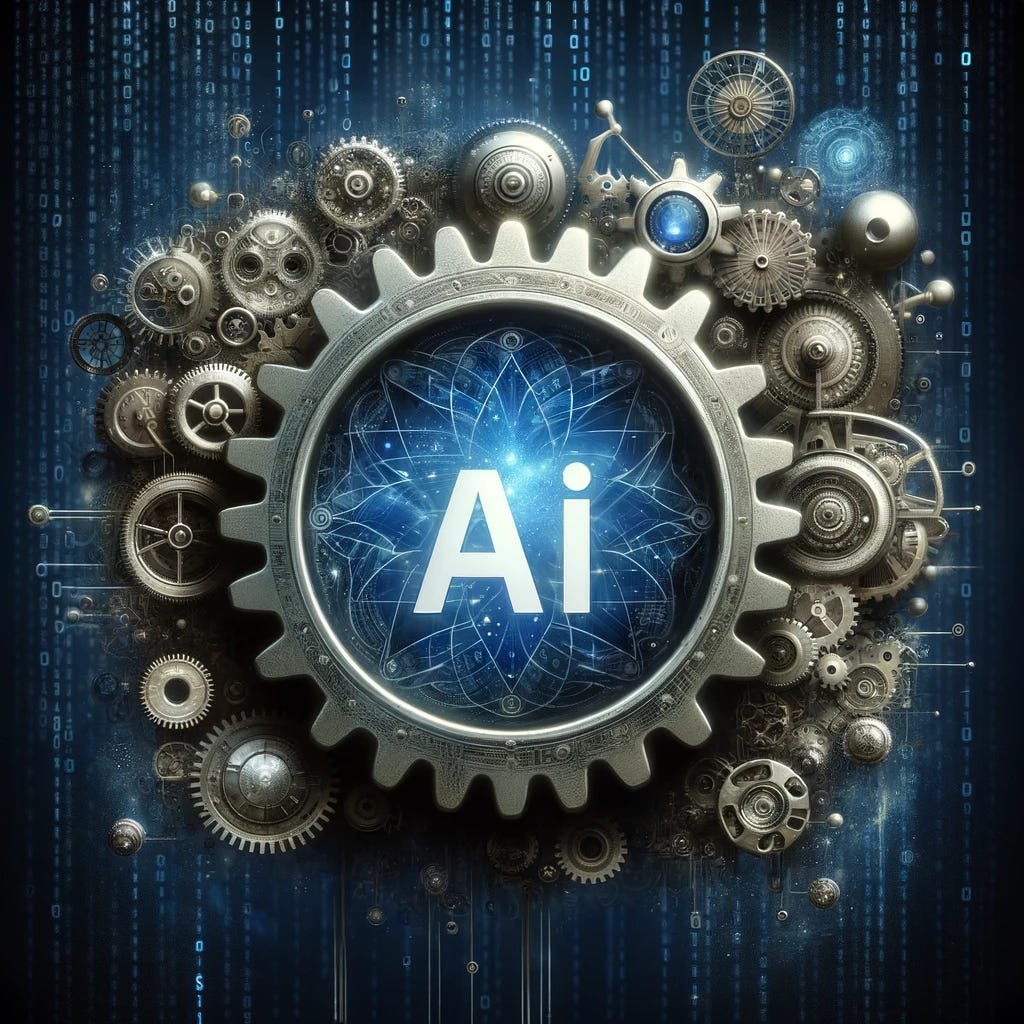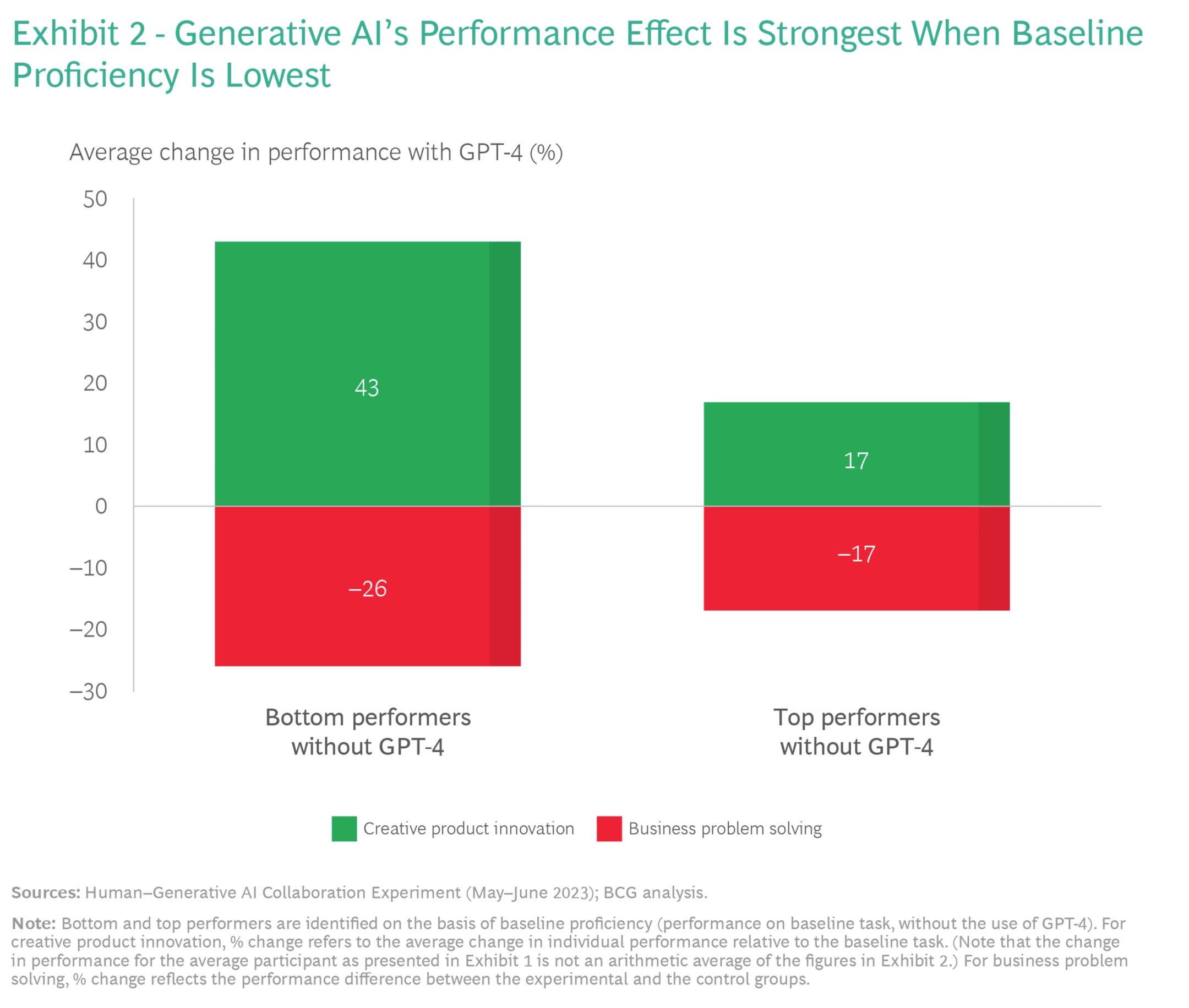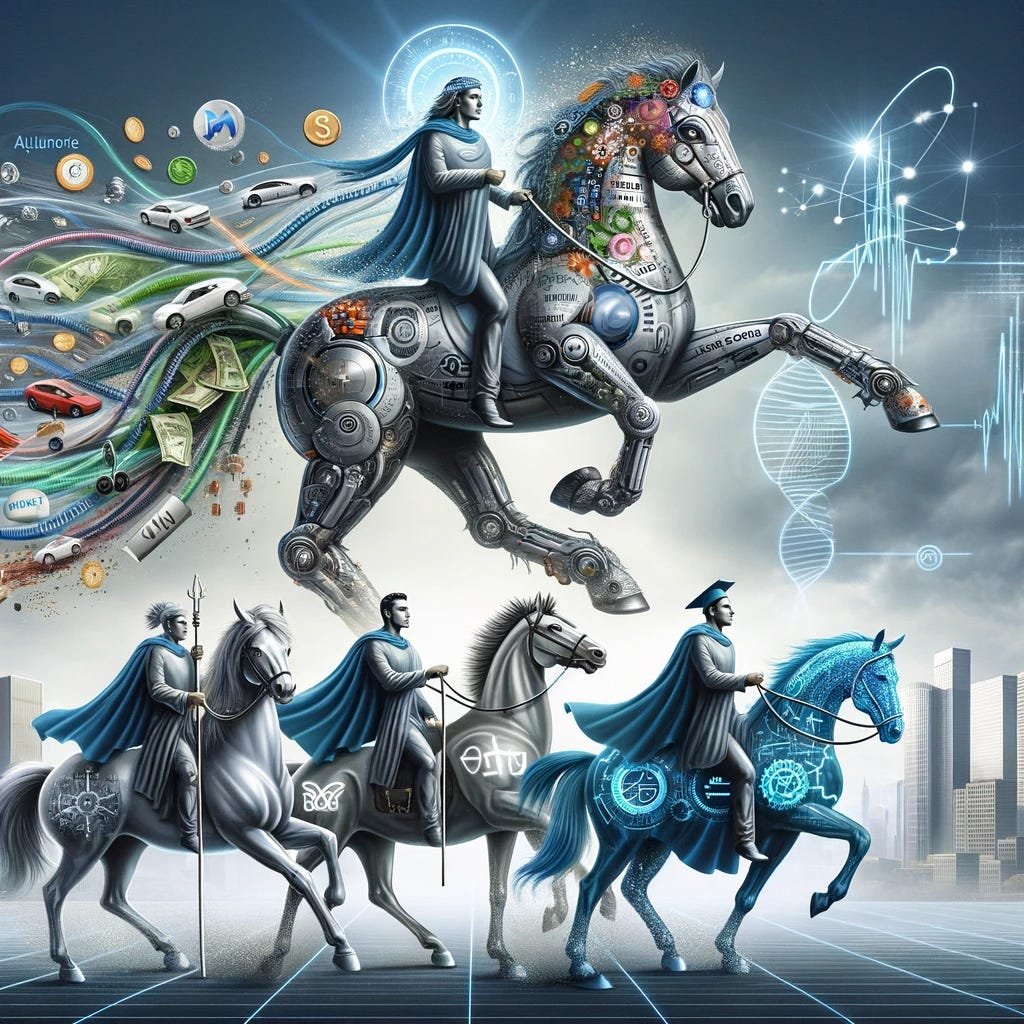Strategic Myopia.
Photography by Linde Waidhofer
Strategy is “Future Competitive Advantage”.
This definition works both at the level of the firm and at the level of the individual.
What will the future look like?
How will the marketplace change with evolving customer needs and expectations?
Who will the competition be not just now but in the future?
Relative to these future needs and competitors what advantage will we or our firms provide?
It is simple way to understand and apply strategy. Here is the process laid out on one page on how every firm and individual can apply strategy including some key questions and approaches: Strategy.
But so many get strategy wrong.
Photography by Linde Waidhofer
Four Strategic Mistakes.
In a piece called Four Strategic Mistakes one set of these mistakes are discussed.
These are:
Mistake 1: Strategies that limit one’s competitive set or category definition by the companies one currently competes with. (Many key opportunities and threats come from outside the way we currently define a competitive set or our categories.)
Mistake 2: Strategies built by extrapolating today’s realities into tomorrow. (Like scale matters or population will keep growing or interest rates will always remain low.)
Mistake 3: Strategies focused on technology trends. (Today it is AI! AI! AI!)
Mistake 4: Strategies that do not incorporate talent dynamics. (People will eat strategy for breakfast, lunch, and dinner.)
More details on these mistakes and how to fix or avoid them are here: Four Strategic Mistakes.
There is however one overwhelming reason that so many companies and individuals really make a mess of strategy.
Photography by Linde Waidhofer
Strategic Myopia!
Strategic myopia is some combination of short-sightedness, long-sightedness or being blind to reality.
Blind to Reality: How many times have we all experiences where our firms or our customers seem to exist in a fairy land disengaged from reality.
Nobody calls out the “turd on the table” because either we do not want to acknowledge the pain that we are on the wrong track or somebody is terrifying or being terrified. Everyone pretends that the brown moist thing in the middle of the table is a brownie when it is a piece of waste.
The problem will solve itself. The issue will dissolve. It is just a short-term hiccup.
But we all know that the issue is real but to confront it means taking on challenges that will be hard to resolve including:
a) we no longer have relevant products or services (AOL as the Internet became more popular.)
b) our marketplace has changed with competitors who have different economics (any traditional media company.)
c) our leaders and even ourselves have outdated skill sets and mindsets. Therefore, unless we learn new things and unlearn old things, we are growing irrelevant (too many senior people especially those who use fear and power to rule.)
Every one of us want to look away and hope we do not have to deal with the challenges. The smart companies and leaders twist themselves into new shapes realizing that transformation is about people.
Short-sightedness: This is a focus on the short term. Results must be delivered this quarter or this year. Either because the urgent crowds out the important, or there are mis-aligned incentives, or short tenures or a focus on the scoreboard of a stock price (even though in reality markets punish companies for not preparing for the future.)
Too many executives align the way they allocate their time with the way they allocate their budgets. Most companies allocate 90% or 95% of their budget on the coming year but that does not mean senior executives should allocate their time that way. The smart ones allocate a quarter of their time to tomorrow, delegating some parts of managing today to their teams. The future cannot be delegated to an innovation group or a futures group (both of which may be important as focal points) but needs a lot of time and commitment of senior management since only they have the expertise to make hard calls, see the patterns and most importantly by doing so signal to the company that the future is important.
Long-sightedness: A form of myopia is long-sightedness which is not being able to see things clearly that are near.
We all have heard the refrains of “this will not happen till I retire”, or “this will happen many years from now so we will worry about it later” only to realize later that 1) change often scales exponentially and what looks like a gradual slope suddenly goes vertical and 2) it takes time for organizations to change (often years) and so waiting is not a form of maximizing strategic options but kicking the ball down the road.
Companies and individuals who wait limit the ability to a) be an early mover and gain competitive advantage with partnerships or pricing and, b) limit the downsides of making mistakes before something has scaled and can truly hurt the organization.
Photography by Linde Waidhofer
Corrective Lenses.
The good news is that strategic myopia can be corrected.
Here are some ways that do not allocate huge budgets or need organizational re-designs.
a) Annual Re-Think: Once a year senior executives should challenge the key assumptions of their strategy. Three key questions to ask are:
Are our customers adding new types of firms or going to other firms for new capabilities?
What are our key competitive advantages that we believe we have and are they truly advantages today or are they anchors that hold us back?
If we were to start our company today with all our assets and no constraints except law and science, given everything we know what would our company look like?
You will be surprised how different the future may look after these exercises.
b) Look outside for inspiration and cautionary tales: Most companies are too focused on their categories and competitors and therefore get defensive if someone says they do not get it or miss that the challenge is not from their existing competitive set. By asking external partners, going on road-trips, and attending conferences to learn with a focus on the following questions:
What are examples of companies that re-invented themselves and created great economic value (Domino’s Pizza, Microsoft, Abercrombie and Fitch, New York Times) and what can we learn from them.
What companies tried to re-invent themselves and failed and why?
What companies failed to change and dwindled away (many newspapers and other print media companies, Blackberry.)
Great strategies are often only seen at a distance (away from one’s category) just like great architecture can only be often appreciated from a distance.
Strategy will grow more and more important as the rate of change and transformation speeds up.
To thrive one must understand strategy, avoid common mistakes and most importantly not be myopic.
Learnings: Life.
Life is a journey through reality and time in search of meaning and joy.
Life.
Life is defined by change, chance, and choice.
Every day we change and the world around us changes.
Much of what happens is life is due to chance. The people we meet. The timing of things. Whom we are born to and where we are born.
Amidst the change and chance, it is the choices we make that determines the quality and substance of a life.
Journey.
The journey we take is in part the journey we make.
Roads diverge and much is determined by which we travel by.
Often, we trip and fall, or we end up at dead ends.
To go on we repair.
We re-imagine.
We practice resurrection.
Reality.
While life without imagination is impoverished and small, we cannot escape reality.
Science matters. Gravity does not care if we believe in it or tweet otherwise.
Facts are stubborn things. Data has a way of breaking in. Karma strikes back.
Darwin was right.
The drums of reality beat in the marrow of our blood.
Let us bring imagination to it but aligning with reality is key to a fulfilling life.
Time.
Time is the only asset.
The meaning of life is that it ends.
Life is often about making memories and focusing on what matters most.
Because what is here today will be gone tomorrow.
Extracting the extra-ordinary from the ordinary and finding poetry in every crevice gives grace to a day.
Meaning.
Meaning is often a combination of identity, connection, and mission / purpose.
Identity is about who we are, what we do and how we fit in our skin.
To be okay with solitude if necessary.
To march to a beat of our own rhythm. To listen and learn from others but not to live in other people’s minds or always be needing their validation.
To both be seen but not be defined by how one is seen.
Connection is key for while we may each be unique and sometimes crave solitude, humans have thrived through belonging and connectedness. Being part of groups, causes, families, cultures, and tribes.
Much of the gusto of life and the go of it comes from mission and purpose. Causes bigger than us and outside us. People to nurture and care for. Goals to be achieved. Things to be built. Work to be created. Spirituality.
Joy.
Success is having the freedom to spend time in the ways that give one joy.
Joy is deeper and broader than and often can exist in the absence of happiness.
Joyous people often combine gratitude, generosity, humility, and learning with a deep sense of connectedness and awareness.
Life is a journey through reality and time in search of meaning and joy.
Photography by Rishad TobaccowalaMind-Shi(f)t.
Mid-Journey 6.0
“When the facts change, I change my mind-what do you do sir”
- Attributed to John Maynard Keynes
“My aim is not to be consistent with my previous statements on a given question, but to be consistent with truth as it may present itself to me at a given moment. The result has been that I have grown from truth to truth.”
- Mahatma Gandhi
“A sign of intellect is the ability to change your mind in the face of new facts. A mark of wisdom is refusing to let the fear of admitting you were wrong stop you from getting it right. The joy of learning something new eventually exceeds the pain of unlearning something old.”
- Adam Grant
A combination of four shifts 1) technological shifts driven by the twin and inter connected forces of AI and Bio-technology, 2) demographic shifts of declining populations ( outside of Africa), and aging populations, 3) power shifts from scale to small (outside of a few cases), management to labor and west to east and 4) boundary shifts in a world where work has become distributed and media and customer behavior have become omni-channel and funnel fusing, individuals and businesses who can shape shift are likely to succeed.
The challenge we will all face is to a) be open to other points of view, b) to be informed by facts, data, reality, and trusted sources and c) how to emphasize quality over quantity, complexity versus caricature and nuance over screed.
These challenges are being turbo-charged by AI, social media like Tik-Tok which is the source for “news” for under 34 year olds, and algorithms optimized to re-enforce our viewpoints and perspectives.
All of this further accelerated by the heat of a 2024 election season in a polarized landscape.
How can we be open to mind-shifts if we are on the receiving end of rivers of mind-shit?
How to to have the wisdom and the calm of the sage and not find our-selves locked into cages of rage?
It is the failure to change our minds and our way of being that lead to defeat.
Self-Defeat.
A case can be made that most successful individuals, institutions and nations are rarely defeated by others but find ways to defeat or weaken themselves to enable their own withering and dissolving.
In almost every case the same four indicators have been flashing for a while, but no one was paying attention.
The four symptoms of SDD (Self-Defeating Disease) are:
Incestuous thinking: A smaller and smaller group of decision makers with similar backgrounds and long tenure in the same place.
Cult replacing Culture: A cult either around a leader, a “way”, a fashionable financial market meme (“everything as a service”, “data driven everything”, “streaming is the only way”, or some other weird dogmas parroted and echoed by a fawning press chasing page views, trending stories and personalities).
Fear: Fear of speaking up, fear of change, fear of opposing the leader or “the way”!
Overreach: Letting recent success and fawning make one lose perspective that much success is driven by luck and trends that can turn and therefore overreaching too far or moving too soon. They tend to defeat them-selves though some combination of complacency, over-reach and haughtiness.
Surrounded by supplicants, sycophants, synchronous thinkers with handlers, gate-keepers, people who powder puff their noses they often have a belief it is they versus the position they inhabit is the source of power.
They are incapable of mind-shifts.
How to ensure Mind-Shift.
Diversity of Thinking: Diversity of backgrounds and thinking particularly in leadership teams are critical. If everybody thinks the same way, it can be dangerous. Disagreement and challenging points of view is what boards, external perspectives and independently successful people bring to a company or to a person.
Building a case for the opposite: Whenever a key decision needs to be made a team or individual should be charged with building a case for the exact opposite of what you as an individual, a leader or board are considering. This provides two benefits. First it allows one to make sure that group think does not disconnect us from reality since there is a reminder that we may be wrong. Second it helps us correct gaps in the thinking of our original recommendation. It is like stress testing our proposition.
A blank piece of paper approach: Many times, individuals and companies find themselves in self-defeating positions because of a way of doing, a historic momentum, legacy costs, or structures and fixating on current category dynamics. What if one was to launch a company or initiative with a blank sheet of paper with only three constraints. A legal one (whatever one does has to be legal), technological (it must be possible today) and economic (some breakeven or other financial constraint) what would one do to anticipate or meet a customer need?
The future comes from the slime and not the heavens: There are many benefits of being a leader, working at a very successful company and being on the top of the world. Everybody wants to meet with you or think you are cool because of the fame and reputation of your company. The press fawns and friends’ gush. It gives us all a great rush. Important that we do not get too high on our fumes and begin to believe our flatulence smells like Chanel 5.
Pay attention to those who may not have title and those over whom you might not have power but who bring thoughts that startle, question and provoke a certain uneasiness.
Gifts.
This holiday season and as the year ends and a new one begins here are gifts we can give others and ourselves that are of high value but cost nothing monetarily.
Joy. Appreciation. Kindness.
Joy
A definition of success is the freedom to spend time in ways that gives one joy.
Joy is more than happiness which is often transitory as it ebbs and flows with external events.
“Joy is a flash of eternity that illuminates time”
The joy that comes with deep satisfaction and contentment however endures and its contours do not waver with the oscillations of the transient.
From Vacillations by W. B. Yeats:
My fiftieth year had come and gone,
I sat, a solitary man,
In a crowded London shop,
An open book and empty cup
On the marble table-top.While on the shop and street I gazed
My body of a sudden blazed;
And twenty minutes more or less
It seemed, so great my happiness,
That I was blessed and could bless.
Experience, time, and observation reveals there are ways to architect joy.
To be free to use your time to pay attention to what matters and what matters to you.
Or as the late David Foster Wallace said in his mind shifting talk This is Water:
“The important kind of freedom involves attention and awareness and discipline and being able truly to care about other people and to sacrifice for them over and over in myriad petty, unsexy ways every day. That is real freedom. That is being educated and understanding how to think. The alternative is unconsciousness, the default setting, the rat race, the constant gnawing sense of having had, and lost, some infinite thing.”
The ordinary becomes extra-ordinary when we pay attention, and we find poetry in the crevices of every day.
“We love life if we find a way to it…”
Appreciation
Among the teachings of the Stoics is the ephemeral nature of life and the passing of time.
As the years go by we find “each year harder to live within…each year harder to live without”
The followers of Wabi-Sabi in the Orient recognize the impermanence, imperfection, and incompleteness of all things.
The Poet Kate Ryan writes of the “joy of finding lost things”
And Carly Simon in “Anticipation” sings that she will stay right here because these are the good old days.
From all these individuals one learns three mental exercises to appreciate what we have:
Imagine a thing you own or a person or place you appreciate lost.
All of us have lost things and sometimes re-found them.
Often not.
A set of keys, a wallet, a passport.
Sometimes a child in a crowd and sometimes a friend after an argument who we make up with.
Other times it is our health or a home or a job.
When we lose something, we often feel more pain in its absence than the joy we had in its presence.
Whenever we have the opportunity to recover it, we appreciate it more than ever before.
An exercise from the Stoics is to imagine you have lost something to appreciate what one has.
As the line goes “we do not know what we have until we have lost it”
Imagine that you were doing something for the last time.
What makes the ordinary and every day extra-ordinary is that one day it will not be so.
There will be a last day a child will crawl. A last day you will see someone. A last day you will visit a place or drive a car or go to a restaurant. Sometimes we know the last times and often we do not. When we are aware of the last times, we have a higher sense of attention and a sensitivity to the specialness and the passing of the moment.
But these last times come every week and sometimes every day.
Imagine that the life you lead is the life that millions aspire to as you aspire to some other life.
We sometimes define our happiness by our advancement toward the things we do not have versus the things we do have.
Most people living in the Western World or Upper and Upper Middle Classes of most countries who also have their health are living the life that billions aspire to.
The life we have got used to is the aspiration for most people.
We are living the dream life for many as we dream of living some other life.
We may wish to celebrate every new day as a day of thanks and gratitude.
Kindness
One of the keys to a good life and possibly success at work is kindness.
This includes not just being kind to other people but kind to oneself.
Often we spend our time regretting, self-flagellating, doubting our decisions and wondering if we can ever measure up especially in a world filled with standards and measures that are unattainable.
In today’s competitive marketplace of rapidly transforming landscapes and constant benchmarking we often forget that we are dealing not just with buyers, sellers, users, members, competitors, analysts, scientists, management and employees but with analog, carbon based, feeling filled people.
Humans.
Messy and Moody. Dream filled and desire driven.. Anxiously ambitious. Undulating with uncertainty.
Kindness is a way to connect in a world where connections are key.
George Saunders the writer in a convocation speech said:
“When young, we’re anxious — understandably — to find out if we’ve got what it takes. Can we succeed? Can we build a viable life for ourselves? But you — in particular you, of this generation — may have noticed a certain cyclical quality to ambition. You do well in high-school, in hopes of getting into a good college, so you can do well in the good college, in the hopes of getting a good job, so you can do well in the good job so you can . . .
And this is actually O.K. If we’re going to become kinder, that process has to include taking ourselves seriously — as doers, as accomplishers, as dreamers. We have to do that, to be our best selves.
Still, accomplishment is unreliable. “Succeeding,” whatever that might mean to you, is hard, and the need to do so constantly renews itself (success is like a mountain that keeps growing ahead of you as you hike it), and there’s the very real danger that “succeeding” will take up your whole life, while the big questions go untended.
Do all the other things, the ambitious things — travel, get rich, get famous, innovate, lead, fall in love, make and lose fortunes, swim naked in wild jungle rivers (after first having it tested for monkey poop) – but as you do, to the extent that you can, err in the direction of kindness.”
All the best to you readers for the days ahead…
Photography by Rishad Tobaccowala
AI is Under-Hyped.
Image by GPT-4
The development of AI is as fundamental as the creation of the microprocessor, the personal computer, the Internet, and the mobile phone. It will change the way people work, learn, travel, get health care, and communicate with each other. Entire industries will reorient around it. Businesses will distinguish themselves by how well they use it.
My sense is that AI will have far greater impact than the microprocessor, the PC, the Internet and the mobile phone. It will have the impact of the printing press, electricity, the automobile, the telephone, television/radio and vaccinations which were far more impactful in changing every aspect of society than information technology.
There are many who believe AI is hype and just a new form of advanced statistics turbocharged by the data available on the Internet, new algorithms and increasingly powerful processors from Nvidia and others.
To keep up to date on this thinking do bookmark and read the AI Hype Wall of Shame below.
Here is why I think otherwise:
Image by GPT-4
1. The keys are in place for AI to truly combust
Oxygen, heat, and fuel are frequently referred to as the "fire triangle." Add in the fourth element, the chemical reaction, and you actually have a fire "tetrahedron."
Fuel = Money. Scott Galloway has written about how he believes that Money rather than Taylor Swift should have been Time’s Person of the Year and there is no doubt that money is overwhelming everything from sports to politics. The largest single tsunami of money movement is to AI both within the worlds of Private Equity and Venture Capital but also within the investment allocations of companies everywhere in the world. Between December 10 and 16 the center of the AI world was not in SF but in New Orleans at NeurIPS 2023 where tens of thousands of people from all over the world including big booths from financial firms like Citadel to major money players from China.
Oxygen= Free. We have seen the marginal cost of compute on a plunge to zero, the marginal cost of distribution due to internet plunge to zero and now we are going to see the cost of knowledge plunge to zero. Massive compute and storage power in the Cloud, world wide access and distribution and global knowledge that is free as open source systems from Mistral and Meta now 4 to 5 months behind the best closed systems from OpenAI (an inappropriate name for a non transparent company filled with intrigue and soap opera ) catch up with far cheaper and faster tech that require less compute and will run on a laptop!
Heat= Disarray. The bankruptcy of old models built for 1945. Here from the New York Times is an extract from an article on something as central as the global financial system:
“Nearly 80 years later, the global financial architecture is outdated, dysfunctional and unjust,” António Guterres, secretary general of the United Nations, said this summer at a summit in Paris. “Even the most fundamental goals on hunger and poverty have gone into reverse after decades of progress.”
The world today is geopolitically fragmented. More than three-quarters of the current I.M.F. and World Bank countries were not at Bretton Woods. China’s economy, in ruins at the end of World War II, is now the world’s second-largest, an engine of global growth and a crucial hub in the world’s industrial machine and supply chain. India, then still a British colony, is one of the top five economies in the world.
Can governments grappled with internal dissensions and the external shifts of a multi-polar regulate a global, exponentially scaling in power, rapidly declining in cost super force soon available to all ?
Image by GPT-4
2. Every knowledge workers job in the developed world and probably in the developing world will be significantly impacted in less than a thousand days.
We are in world where the cost of knowledge is tending towards zero, where the cost of content creation is being dramatically reduced, where the time spent in collecting, collating, organizing and presenting information is being reduced by 50% to 80% and most managerial tasks of allocating, delegating, monitoring and measuring will be done ruthlessly faster with fewer mistakes by AI than what exactly is a knowledge workers job?
If you were impressed by prompt to text and prompt to image now consider Idea to Video via Pika .
A recent Boston Consulting Group study shows the impact of today’s generative ai technology (which will be exponentially better and cheaper next year) including how these technologies enable a flattening of skills.
Most knowledge firms like law to consulting to marketing basically have a system where they charge by the hour.
Now consider that AI a) dramatically reduces the number of hours, b) lessens the need for lower level associates who often did collection, collation, compilation, and co-ordination work done by AI ( and these are the most profitable to a service company since the difference between what they are paid and billed is widest in these firms and c) and allows mid level performers who may be paid much less than the most senior executives to operate close to their level of competence.
Now imagine the impact on jobs in a future where one must bill less time with lower margin and fewer senior people?
No need to imagine. McKinsey has shrunk its new partner class by 35% from 380 people last year to 250 this year. And Ernst and Young has cut 10% of all of its consulting partners. While these are about today’s challenges these firms are smart enough to anticipate tomorrow. ( For the near term AI has been a boon to consulting and other firms but this is the first time what they are consulting about is also likely to revolutionize their business.)
In the media industry of publishing and news already 20,000 jobs have been cut as changes by tech platform from down playing content and news to re-jiggering where they send traffic.
And the impact of AI is yet to be felt
Now imagine a television show where AI creates and powers all the content and is the Talent.
No need to imagine try out Channel 1…
Now imagine you were a translator or a company selling language lessons.
Well Eleven Labs is the first of many that will allow for real time free translation and dubbing of any content in any language or accent for close to free…
And however impressed or unimpressed you are by the above examples its nothing compared to what we will see in a few weeks ( not months or years).
Image by GPT-4
3. The Four Big Horsemen of GDP are in for an exciting ride!
In the US nearly half of GDP is concentrated in the Health, Auto, Finance and Education industries all of which are going to have amazing opportunities along with rapid changes brought about by AI which will require strong leaders to navigate.
Health: Google’s DeepMind has had major breakthroughs in protein folding which will be revolutionary in developing new cures but also is being leveraged to enhance clinical trials, interpret images and provide much more reliable and faster diagnosis.
Education: When knowledge is free and the future of all industries changing rapidly the world of education is or should be asking itself some existential questions such as What should we be teaching? Maybe in a world where allocating, delegating, monitoring and measuring will be replaced by creating, building, making and guiding, education should go back to school on what is education and how to focus less on knowledge but more on insight, wisdom, communications and creativity. Another question is since AI is going to be so disruptive to so many industries should education now focus on re-skilling and up-skilling all career long versus a focus on pre-career training?
Finance: Finance is a unique combination of math and emotion (greed/fear). AI is changing the math dramatically. Let us look at insurance which is an underwriting and claims processing business often based on actuarial tables and deep droves of data including weather patterns and sensors on cars among other objects. All the big Insurance companies are deeply investing in AI to better manage and price risk. Intriguingly AI will reduce risk and liability if cars are safer but increase liabilities if AI drives massive positive health outcomes and people live longer meaning that a lot of insurance and annuities that are sold today may be underpriced!
Auto: It is not just electric cars but all modern cars are increasingly computing engines on wheels and AI has been used for design, engineering and more. Just as we saw the rise of Chinese Auto due to the electric shift, AI be a big driver in auto. A large part of Tesla’s market capitalization is that it is one of the premier AI companies at heart.
Image by GPT-4
4. AI will create great disruption but with proper leadership can be a massive net positive for the next chapter of humanity.
Every major advance from printing press to automobiles to electricity has created great disruptions and significant loss of jobs and the need for new ways of governing and thinking but have in time been hugely positive in a multitude of ways furthering humanity.
While AI will need to be governed it will be hard to slow or stop or control due to its global nature, its exponential and rapid advancement along with the current constraints of government.
While many worry about rogue AI ending the world it is far more likely to enable a better world with amazing empowerment of individuals, catalyze tens of millions of new businesses, provide new opportunities for emerging and smaller countries, allow for a significant extension in healthier lives and much more.
The rate of how fast these changes will occur is not being understood as every firm follows a 3 E strategy of embedding, enhancing and extending their existing products and services with AI as Microsoft has done with Co-pilot or Google with Bard scaling and making available the technology to hundreds of millions of users in a matter of weeks!
The shift from the current to the new world will likely be chaotic and for individuals and institutions to remain relevant in an AI age it will be key to embrace AI, adapt yourself and your business to AI and complement AI.
This will be a time calling for great leaders, continuous learning and open imaginations.
All moving forward with great urgency…













